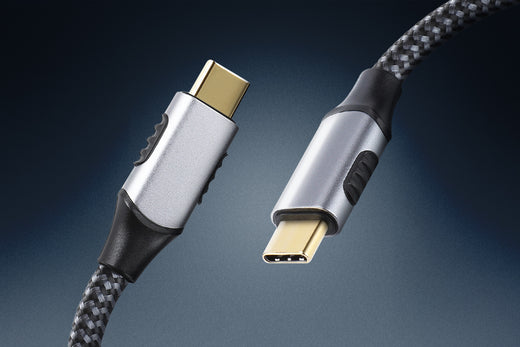When it comes to connecting your devices to a monitor or TV, you might hear a lot about HDMI and DisplayPort. Both are popular options, but each they have their own strengths and weaknesses. Let us break it down for you.
What Are HDMI and DisplayPort?
-
HDMI stands for High-Definition Multimedia Interface. This is the most common connection for TVs, gaming consoles and laptops carrying both video and audio signals, which means you only need one cable for both.
- The DisplayPort connection is often found on gaming monitors and PCs. Like HDMI, it can also carry video and audio, but it’s designed to support higher resolutions and refresh rates, making it a favorite among gamers.
HDMI
Pros |
Cons |
| Widespread Compatibility: HDMI is everywhere! Most TVs, laptops, and gaming consoles use HDMI, so you’re likely to find it on any device you own. |
Limited Bandwidth: While HDMI can handle high resolutions, it generally has lower bandwidth compared to DisplayPort. This means it might not support the highest refresh rates or resolutions as well as DisplayPort can. |
|
Audio and Video Together: You can send both audio and video through one cable, which is super convenient for connecting to TVs or sound systems. |
Less Versatile for Multi-Monitor Setups: HDMI isn’t as great for connecting multiple monitors in a daisy chain (where one monitor connects to another) compared to DisplayPort. This may not be important for a gaming set up, but for a workspace environment it could be crucial. |
DisplayPort
Pros |
Cons |
|
Higher Bandwidth: DisplayPort can handle more data, which means it supports higher resolutions and refresh rates. For example, it can support 4K at 120Hz or even 8K at 60Hz, making it ideal for gaming and high-end displays. |
Less Common on TVs: While DisplayPort is great for computers and monitors, you won’t find it on most TVs. This means if you want to connect your gaming console to your TV, you’ll likely need an HDMI cable. |
|
Daisy Chaining: You can connect multiple monitors using just one DisplayPort output, which is awesome for gamers or anyone who needs a lot of screen space. |
More Complex: Sometimes, DisplayPort can be a bit more complicated to set up, especially if you’re using adapters or trying to connect to older devices. |
|
Locking Mechanism: DisplayPort cables often have a latch that keeps them securely connected, so you don’t accidentally unplug them. |
In summary, HDMI is your go-to for general use, especially with TVs and consoles, while DisplayPort shines in high-performance scenarios like gaming and multi-monitor setups. If you’re a gamer or someone who loves high-resolution displays, DisplayPort might be the better choice. But for everyday use, HDMI is usually more than enough.
To check out our selection of HDMI and DisplayPort options, visit our store. Or if you are not sure what cable suits your needs feel free to get in contact with us.

















Leave a comment
All comments are moderated before being published.
This site is protected by hCaptcha and the hCaptcha Privacy Policy and Terms of Service apply.